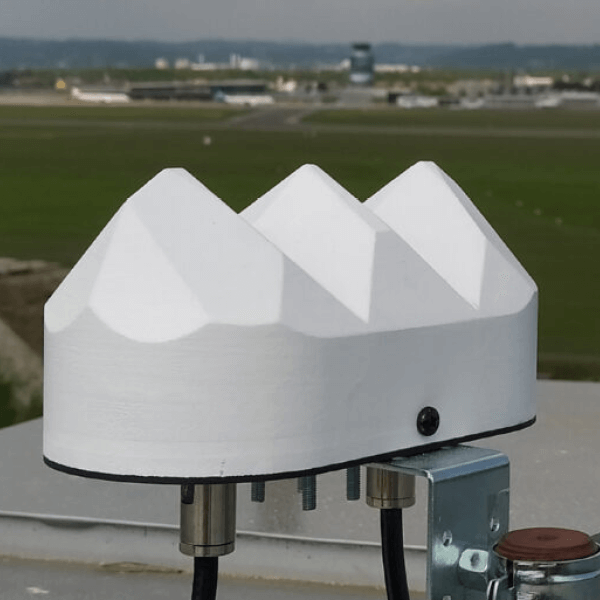The Increasing Threat of GNSS Jamming and Spoofing
In November 2023, the European Union Aviation Safety Agency (EASA) issued a revision to its safety bulletin addressing the increasing threat of Global Navigation Satellite Systems (GNSS) jamming and spoofing.
EASA - the leading, independent safety and environmental authority for aviation in Europe - has continued to document a rise in GNSS spoofing and jamming since early February 2022. The increase in spoofing and jamming events has not only been in frequency, but severity and sophistication. Part of this increase has been driven by increased political tensions in some geographical areas, as reliance on GNSS systems is integrated into many modern defence applications, particularly drones and guidance systems.
What is GNSS Spoofing?
Spoofing involves broadcasting a deliberately false GNSS signal with the intent to change the position, navigation data or time of the affected receiver. The most common style of spoofing is simply by generating a signal that is stronger than the actual GNSS signal, which the affected GNSS receiver will take as the true signal.
What is GNSS Jamming?
Jamming is, in essence, signal interference, causing loss of accuracy and potentially loss of positioning. Due to GNSS being a very weak signal, jamming is not always intentional and can come from an innocent source like an air conditioning unit if the antenna is mounted too close. However, its use can be to prevent a receiver from locking onto satellite signals and has the main effect of rendering a GNSS system ineffective or degraded for users in the jammed area.
The Effects of Jamming and Spoofing


It can be difficult to detect spoofing or jamming interference. Civil aviation systems generally have no specific flight crew alerts for interference of signals. Depending on aircraft integration, various side effects of jamming have been observed which could be attributed to spoofing and vice-versa. Due to the difficulty in establishing spoofing from jamming, the recent EASA safety bulletin update provides a list of some of the suspected GNSS interference outcomes:
- Incoherence in navigation position, such as GNSS/FMS position disagree warnings
- Inconsistent flight guidance possibly resulting in route deviations, un-commanded turns, and potential airspace infringements;
- Inability to use GNSS for navigation, including waypoint navigation
- Abnormal differences between Ground speed and True airspeed;
- Time shift
- Problems with INS/IRS.
These outcomes, whilst not exhaustive, can have a varying level of impact on commercial aircraft - depending on the duration of the interference, the stage of flight, and how dependant an aircraft system is on GNSS signals. However, it has been reported that GNSS interference has led to flights being re-routed or in some cases, triggering false Terrain Awareness and Warning System (TAWS) Alerts.
How to Address the Rising Threat of GNSS Jamming and Spoofing
EASA has recommended the implementation of several mitigation measures for flight operators in areas most affected by GNSS interference. Essentially, operators should be monitoring GNSS sources for interference, and aircraft and equipment manufacturers should also be aware of spoofing to make their systems secure from external threat. Understanding how to mitigate the potential impact spoofing and jamming attacks should be paramount for manufacturers of both commercial and military/government applications.
OHB Austria Solutions


GNSS Quality Assurance Solutions from OHB Austria
EASA has recomOne way of mitigating the threat of GNSS interference for critical infrastructure is by using GIDAS from OHB Austria.


The GIDAS Stationary platform is a permanently installed GNSS quality assurance system, designed for safety-critical infrastructure, such as airports and ports. The air traffic controllers or port operators have a live view at the on-site health and quality of GNSS, before navigation systems are negatively affected by external GNSS interference.
For aircraft and equipment manufacturers, OHB Austria also offer an embedded version of GIDAS - specially designed to add GNSS quality assurance to existing products utilising a GNSS receiver. The software version of GIDAS contains the algorithms used within the GIDAS stationary, which can be used with 3rd party GNSS receivers to alert and provide a full review of the type, strength and specific sub type of attack.
Manufacturers utilising the GIDAS-embedded algorithms will benefit from increased reliability during operations by providing a proactive mechanism to detect and ignore false GNSS signals, or switching to alternative navigation systems during a jamming event.
Contact a member of our team for expert advice
For further information on GNSS quality assurance systems from OHB Austria, start a technical conversation with a member of our team, who can provide further technical guidance, demonstrations and complementary solutions for keeping critical systems safe and secure.
